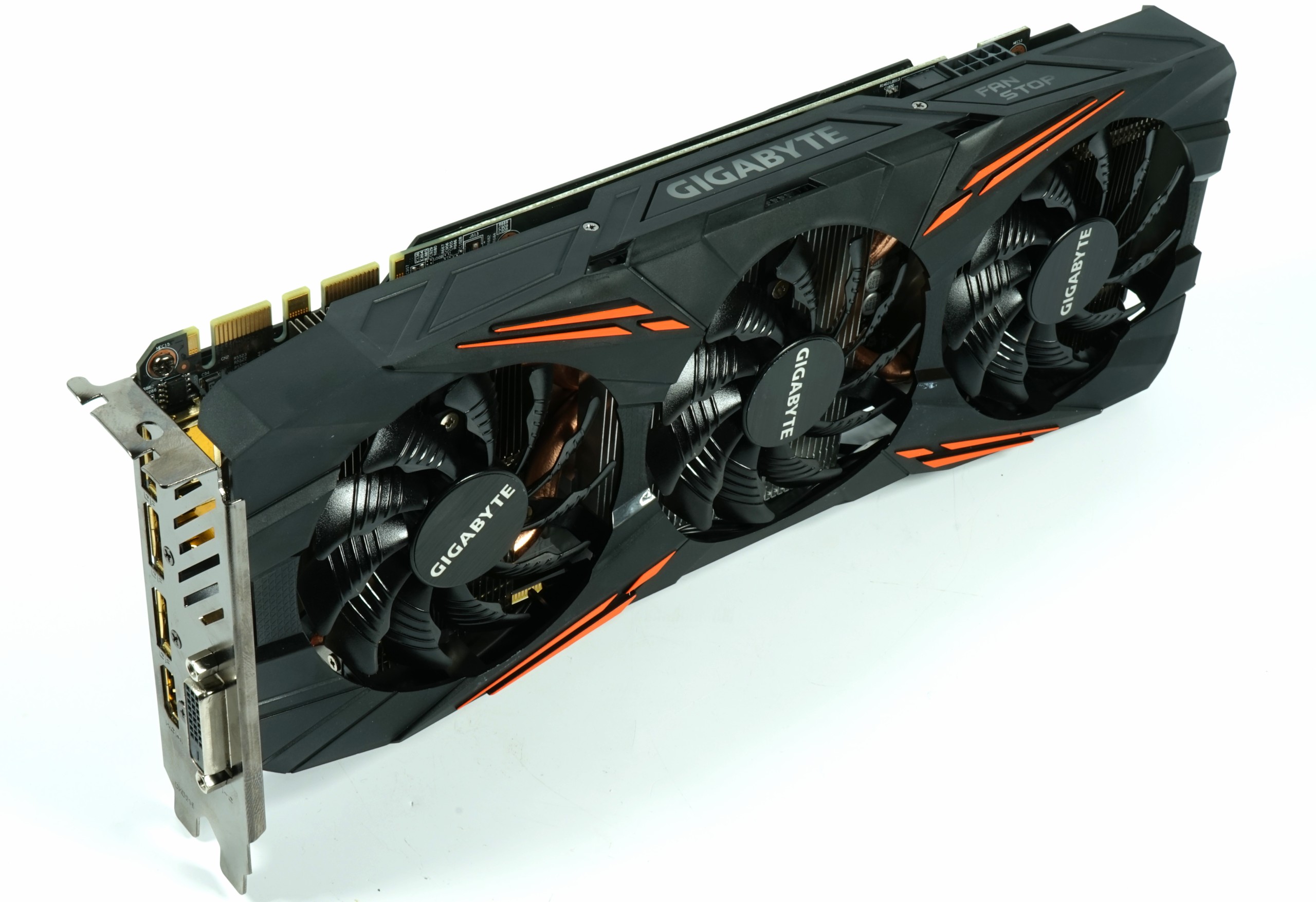Gigabyte GeForce GTX 1070 Ti Gaming 8G Review
Why you can trust Tom's Hardware
Conclusion
It doesn't appear much effort was put into developing Gigabyte's GeForce GTX 1070 Ti Gaming 8G. The card's one advantage would have been a custom-tuned BIOS, but Nvidia obviously took that away just before launch.
What we get, then, is similar performance as the other 1070 Tis out there. No surprise. And really, that may have been all Gigabyte was trying to ensure in the first place, demonstrating what Nvidia's board partners think about this placeholder card, which can't even be factory-overclocked. Nobody's really eager to try something new or innovative with such a locked-down piece of hardware.
Gigabyte's approach may be just fine for gamers looking for predictable performance at 2560x1440. The GeForce GTX 1070 Ti Gaming 8G is fast, light, armed with a semi-passive fan mode, and good-looking. Interestingly, it's only a little more than half the weight of Zotac's GeForce GTX 1070 Ti AMP Extreme. And yet, it's no noisier or slower under load. Thanks to that semi-passive mode, it's also completely silent at idle. Zotac doesn't give you similar functionality.
The only obstacle Gigabyte needs to overcome now is its comparative pricing. GeForce GTX 1070 Tis start at $450, and we'd expect a model built with GTX 1070 parts to show up around that level. Instead, the 1070 Ti Gaming 8G sells for $490, or about $10 less than the cheapest GTX 1080. Really, it's hard to recommend any 1070 Ti in such close proximity to the next step up in performance.
MORE: Best Graphics Cards
MORE: Desktop GPU Performance Hierarchy Table
MORE: All Graphics Content
Get Tom's Hardware's best news and in-depth reviews, straight to your inbox.

Igor Wallossek wrote a wide variety of hardware articles for Tom's Hardware, with a strong focus on technical analysis and in-depth reviews. His contributions have spanned a broad spectrum of PC components, including GPUs, CPUs, workstations, and PC builds. His insightful articles provide readers with detailed knowledge to make informed decisions in the ever-evolving tech landscape
-
Cryio I'm still mostly impressed how the Vega64 is universally faster than 1080, same for Vega56 vs 1070.Reply -
derekullo Reply20526514 said:I'm still mostly impressed how the Vega64 is universally faster than 1080, same for Vega56 vs 1070.
The Geforce 1080 beats the Vega64 in Tom Clancy's Ghost Recon Wildlands at 2560x1440.
The Vega64 is also a 295 watt tdp card versus the 180 watt Geforce 1080.
A 60% increase in TDP to be 0 - 12% better is not very efficient.
https://www.techpowerup.com/gpudb/2839/geforce-gtx-1080
https://www.techpowerup.com/gpudb/2871/radeon-rx-vega-64
For completeness, the Geforce 1080 Ti is a 250 watt card.
https://www.techpowerup.com/gpudb/2877/geforce-gtx-1080-ti
On the other hand, Vega56/64 are both awesome monero miners even taking their 295 watt tdp into account.
https://whattomine.com/coins?utf8=%E2%9C%93&adapt_q_280x=0&adapt_q_380=0&adapt_q_fury=0&adapt_q_470=0&adapt_q_480=0&adapt_q_570=0&adapt_q_580=0&adapt_q_vega56=1&adapt_vega56=true&adapt_q_vega64=0&adapt_q_750Ti=0&adapt_q_1050Ti=0&adapt_q_10606=0&adapt_q_1070=0&adapt_q_1080=0&adapt_q_1080Ti=0ð=true&factor%5Beth_hr%5D=36.5&factor%5Beth_p%5D=210.0&grof=true&factor%5Bgro_hr%5D=38.0&factor%5Bgro_p%5D=190.0&x11gf=true&factor%5Bx11g_hr%5D=10.5&factor%5Bx11g_p%5D=230.0&cn=true&factor%5Bcn_hr%5D=1850.0&factor%5Bcn_p%5D=190.0&eq=true&factor%5Beq_hr%5D=440.0&factor%5Beq_p%5D=190.0&lre=true&factor%5Blrev2_hr%5D=13000.0&factor%5Blrev2_p%5D=190.0&ns=true&factor%5Bns_hr%5D=290.0&factor%5Bns_p%5D=160.0&lbry=true&factor%5Blbry_hr%5D=260.0&factor%5Blbry_p%5D=210.0&bk2bf=true&factor%5Bbk2b_hr%5D=1900.0&factor%5Bbk2b_p%5D=230.0&bk14=true&factor%5Bbk14_hr%5D=2600.0&factor%5Bbk14_p%5D=210.0&pas=true&factor%5Bpas_hr%5D=1350.0&factor%5Bpas_p%5D=230.0&skh=true&factor%5Bskh_hr%5D=36.0&factor%5Bskh_p%5D=210.0&factor%5Bl2z_hr%5D=420.0&factor%5Bl2z_p%5D=300.0&factor%5Bcost%5D=0.1&sort=Profitability24&volume=0&revenue=24h&factor%5Bexchanges%5D%5B%5D=&factor%5Bexchanges%5D%5B%5D=abucoins&factor%5Bexchanges%5D%5B%5D=bitfinex&factor%5Bexchanges%5D%5B%5D=bittrex&factor%5Bexchanges%5D%5B%5D=bleutrade&factor%5Bexchanges%5D%5B%5D=cryptopia&factor%5Bexchanges%5D%5B%5D=hitbtc&factor%5Bexchanges%5D%5B%5D=poloniex&factor%5Bexchanges%5D%5B%5D=yobit&dataset=Main&commit=Calculate
-
danielh1949 Stacking 4 Oscopes on top of a high shelf? are you serious? please reconsider, your work is worth reading.Reply -
FormatC Reply
What's the problem? Haven't you ever been in a lab before? The parts can be stacked and this is provided for by the manufacturer. Besides, everything's screwed down, don't worry. I need short signalling pathways to connect the scopes to each other, there are not many possibilities left. And - between you and me: when I'm standing in front of it, the top scope is barely at eye level. This is the art of photography, not a high shelf :D20526949 said:Stacking 4 Oscopes on top of a high shelf? are you serious? please reconsider, your work is worth reading.
If you don't have any problems, you can build your own... ;)
-
danielh1949 Reply
Just concerned about your safety, and I've built enough of my own; but I see from your picture that I need not be concerned. Nice setup, as long as it's safe. I look forward to interesting reading. I'd especially like waveform comparison of the current PCI with the new bus they're considering as the replacement. The whole waveguide multilayer PC board is nearly as interesting as Walsh codes. Merry Christmas and Happy New Year. Hope it's better than this one was. Old Lang Syne is gaining new meaning to me. Dan20529267 said:
What's the problem? Haven't you ever been in a lab before? The parts can be stacked and this is provided for by the manufacturer. Besides, everything's screwed down, don't worry. I need short signalling pathways to connect the scopes to each other, there are not many possibilities left. And - between you and me: when I'm standing in front of it, the top scope is barely at eye level. This is the art of photography, not a high shelf :D20526949 said:Stacking 4 Oscopes on top of a high shelf? are you serious? please reconsider, your work is worth reading.
If you don't have any problems, you can build your own... ;)
-
FormatC Have you ever been to the lab in China? What is the screw for the German and the glue for the American is the cable tie for the Chinese. It's all very optimistic (ok, it looks so), but it's (mostly) holding up well. :DReply
I wish you also a happy new year and have a nice time. :) -
danielh1949 Reply20533302 said:Have you ever been to the lab in China? What is the screw for the German and the glue for the American is the cable tie for the Chinese. It's all very optimistic (ok, it looks so), but it's (mostly) holding up well. :D
I wish you also a happy new year and have a nice time. :)
My uncle, Herr Professor, sent me German Erektor Sets for my earliest birthdays (or so I seem to remember), Your question brought to my mind a vision of an erector set tower held together by wire ties.:pt1cable: I guess it would be good for an earthquake, although I would not like to be on it at that time.
